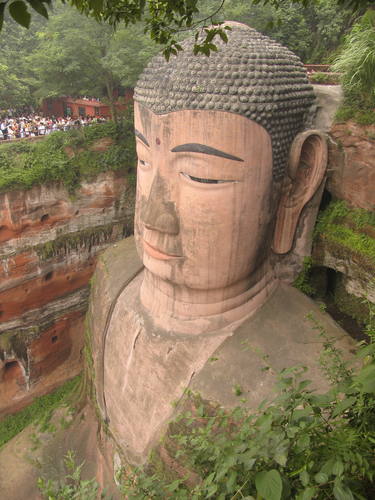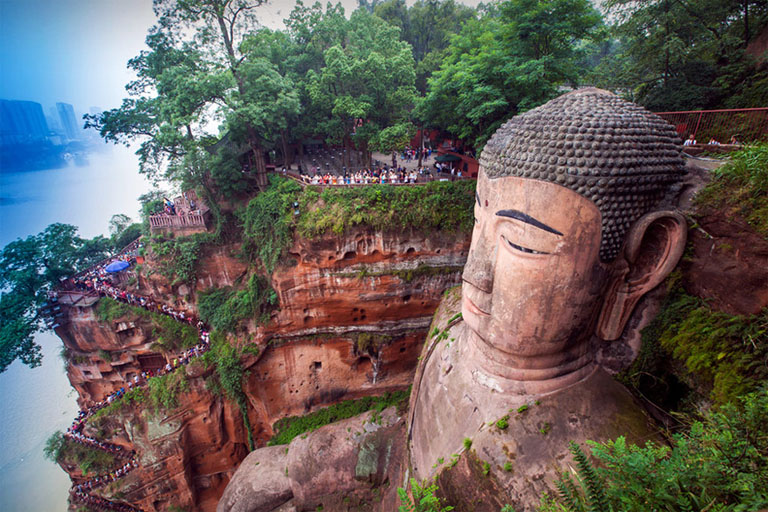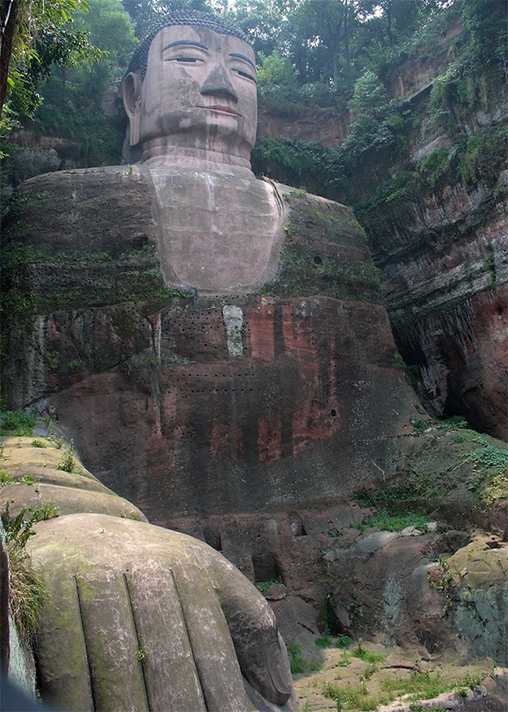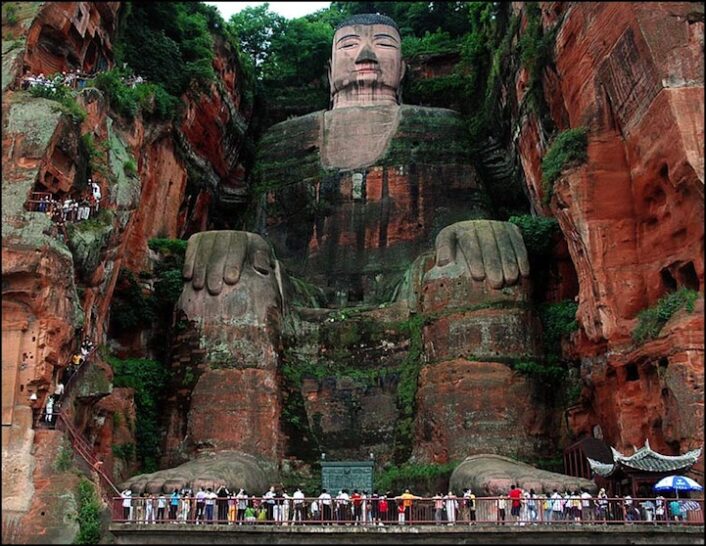Culture
Leshan- the world’s largest buddha

The buddha’s official names is Leshan Giant Buddha.
Image courtesy of: My Modern Met
Meet Leshan, the world’s largest stone Buddha statue located in the Sichuan province of China, near the city of Leshan. The monumental structure was first carved into the hillside of Xijuo Peak that overlooks the junction of the Minjiang, Qingyi and Dadu Rivers.

Mount Emei Scenic Area is a UNESCO World Heritage Site.
Image courtesy of: UNESCO, photographed by: Aneta Ribarska
Located in the province of Sichuan, the specific area is Mount Emei (Emeishan), an area of immense cultural significance in regards to where Buddhism was first established on Chinese territory and from where it spread throughout the Far East.
The first Buddhist temple, Guangxiang Temple, in China was built on Mount Emei’s summit in the 1st-century CE. In addition to Leshan, there are 30 other temples including the Wannian Temple which was built in the 4th-century and contains the almost 8-meter high Puxian bronze Buddha of the 10th-century. In addition, garden temples including the Quigyin Pavilion complex of pavilions, towers, and platforms from the early 6th-century helped turn the mountain into one of Buddhism’s holiest sites.
The Leshan Buddha is a seated Maitreya Buddha, meaning “an individual on the path to becoming a Buddha”, and also a disciple of the Buddhism’s founder, Siddhartha Gautama. Embedded into the natural environment since his initial construction, the buddha has weathered the test of time over the years.
Originally, the gigantic figure was adorned with a thirteen-story, gold-plated, wooden structure that served him as a source of shelter. However, that piece of construction was destroyed and left the 233-foot-tall Buddha to fend for himself. Now, the figure is as much a part of the mountain as the mountain it is carved into. Locals say, “The mountain is a Buddha and the Buddha is a mountain.”

The plank road that leads up and down Leshan Giant Buddha.
Image courtesy of: China Discovery
The heavy rains of 2020 and prior brought unusually heavy flooding and killed hundreds of people, displacing millions more. The site where the Buddha sits and stands guard was closed to tourists as officials surrounded the structure with sandbags in an attempt to protect it. Sadly though, the waters rose high enough to cover the Buddha’s giant toes. This was the first time those toes were submerged since the founding of the People’s Republic of China in 1949.
Summer flooding is quite common in this region; last summer the majority of the flooded rivers are in the Yangtze River’s basin, which flows from west to east through the densely populated provinces of central China. The Yangtze River is the longest and most important waterway in China, irrigating many plots of farmland and linking many inland industrial cities with Shanghai on the eastern coast.

Two adults can fit inside the Buddha’s ears.
Image courtesy of: My Modern Met, photographed by: David Schroeter
Perhaps the most interesting fact is that behind the Buddha’s head and between his ears, the Leshan Giant Buddha has a unique and advanced drainage system that helps to preserve the statue from erosion. In addition, there are several hidden gutters and channels scattered in his hair, collar, and chest. Finally, the holes in the back of his ears and chest have been carrying out the rainwater in order to keep the inner areas dry. This advanced drainage system has helped to prevent the buddha from eroding over the past 1,200 years.
Behind the Buddha’s head and between his two ears, the Leshan Giant Buddha has a unique and advanced drainage system to preserve the statue from erosion. There are several hidden gutters and channels scattered in Buddha’s hair, collar, chest, and holes in the back of his ears and chest that have been carrying out the rainwater to keep the inner areas dry. This complex architectural system has been preventing the statue from eroding for the past 1,200 years.
